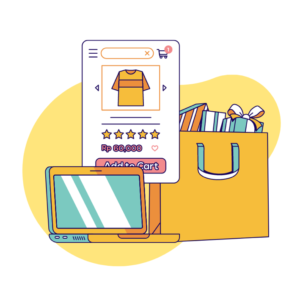 As the inaugural webinar in the Side Hustles series (an exploration of the different ways artists diversify their incomes), Online Shops was hosted on February 23 by TAG’s Members Program Coordinator Jackie Huang. The program featured panelists Elsa Chang (Big Cartel, Threadless, Etsy), David DePasquale (Squarespace), and Miranda Dressler (Etsy). Panelists discussed the following topics:
As the inaugural webinar in the Side Hustles series (an exploration of the different ways artists diversify their incomes), Online Shops was hosted on February 23 by TAG’s Members Program Coordinator Jackie Huang. The program featured panelists Elsa Chang (Big Cartel, Threadless, Etsy), David DePasquale (Squarespace), and Miranda Dressler (Etsy). Panelists discussed the following topics:
Types of online shops
There are a variety of platforms available for an online shop. The three main types include:
- A marketplace (such as Etsy or Big Cartel)
- A personal website (such as Squarespace)
- A third-party print-on-demand company (such as Threadless)
Each platform has its pros and cons. Etsy, for example, has branded itself as a marketplace for independent artists. Shoppers looking to support independent artists can search the site for specific items that could lead them to your shop. However, Etsy’s interface is not as customizable as a personal site such as Squarespace.
Squarespace is great for creating a personal website that can also host a shop where customers can buy directly from you. Shoppers will not be directed to a third-party site to make a purchase. However, Squarespace does not have as many integrated functions. For example, you may have to use the ShipStation software platform to buy labels and print postage. Another downside of not being in a larger marketplace like Etsy is that you have to promote your own shop and direct customers to it.
A third-party print-on-demand company like Threadless has dozens of product options for you to select your artwork be printed on. Simply upload an image and select which products buyers can purchase with that piece of art: T-shirts, pillows, shows, etc. Advantages include not having to store products and pack and ship orders. Downsides are that you may not be able to personalize the packaging from the shipper or the quality of your products may be inconsistent.
Platforms also have different fees. Etsy charges a fee to list/re-list an item and also takes a cut when the item sells. Squarespace does not have item listing fees, but it does have a monthly/annual fee to host your website. Depending on your plan, you may also be charged a 3% transaction fee when an item sells. Threadless does not have any upfront fees, but has a base cost for each item, so your profit margins are usually slim.
As our panelists noted, there’s no reason why you can’t have more than one shop. There are advantages to all options that may benefit you depending on the type of product you wish to sell.
Promotions and discounts
The panelists shared that when they heavily promoted their shops with sales or paid ads, they often saw an upswing in purchases, especially during the holiday season. When they didn’t promote their shops, purchases would often flat line. Sometimes, this was a deliberate choice when they didn’t have as much time to focus on fulfilling, packing, and shipping orders.
Dealing with customers
For the most part, our panelists have had pleasant interactions with their customers, but there are always difficult situations Becoming a shop owner means having to deal with upset customers over lost packages, incorrect items, and/or quality issues. Our panelists’ advice is to do your best to be transparent upfront, and try to fix issues as they arise, even if that means reshipping an item for free a second time.
Having an online shop is a learning curve. There is no single best platform, but rather platforms that work best for individual sellers. It may take some time to figure out what items sell best for you on what sites, and adjustments will be made along the way. All of our panelists agree, though, that an online shop can be a good source of additional income throughout the year.


